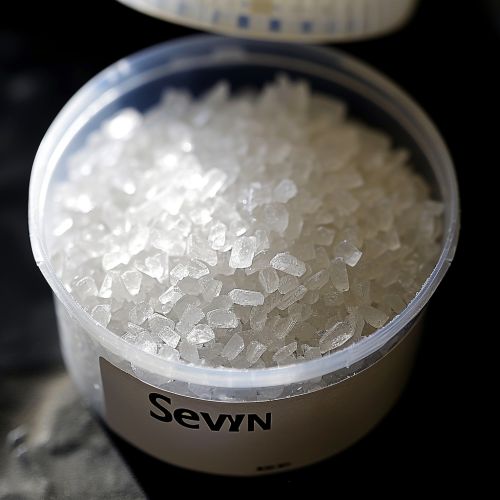Sevin
Overview
Sevin is a brand name of a broad spectrum insecticide chemical known as Carbaryl. It is a white crystalline solid commonly used in gardens and homes for control of various insect pests. The chemical was first synthesized in 1958 by Union Carbide and has since been used extensively in both agricultural and non-agricultural settings.


History
The development of Sevin dates back to the late 1950s when scientists at Union Carbide, an American chemical corporation, were searching for effective and safe insecticides. The result of their research was the synthesis of Carbaryl, which was then marketed under the brand name Sevin. It quickly gained popularity due to its broad-spectrum activity against a wide range of insect pests and relatively low toxicity to mammals.
Chemical Composition
Carbaryl, the active ingredient in Sevin, is a carbamate insecticide. It is chemically known as 1-naphthyl methylcarbamate and has the chemical formula C12H11NO2. The compound is a white crystalline solid at room temperature and has a slight odor.
Mode of Action
Sevin works by inhibiting the activity of an enzyme called Acetylcholinesterase in the nervous system of insects. This enzyme is responsible for breaking down acetylcholine, a neurotransmitter that transmits signals in the nervous system. When acetylcholinesterase is inhibited, acetylcholine accumulates in the nerve synapses, leading to overstimulation and eventual paralysis of the insect.
Uses
Sevin is used in a variety of settings for insect control. It is commonly used in home gardens and landscapes to control pests such as aphids, beetles, and caterpillars. In agriculture, it is used on a variety of crops including fruits, vegetables, and grains to control pests such as corn earworms, cutworms, and armyworms. It is also used in public health programs for control of mosquitoes and other vectors of disease.
Environmental Impact
While Sevin is considered less toxic to mammals, it can have significant impacts on non-target organisms in the environment. It is highly toxic to bees and other beneficial insects, as well as to aquatic invertebrates and fish. It also has the potential to contaminate water bodies through runoff from treated areas.
Health Effects
Exposure to Sevin can result in a variety of health effects in humans, depending on the level and duration of exposure. Short-term exposure can result in symptoms such as nausea, vomiting, abdominal pain, and sweating. Long-term exposure can lead to effects on the nervous system, including weakness, tremors, and changes in mood and behavior.
Regulatory Status
In the United States, Sevin is regulated by the EPA. The agency has classified it as a general use pesticide, meaning it can be purchased and used by the general public. However, there are restrictions on its use to protect non-target organisms and the environment.
